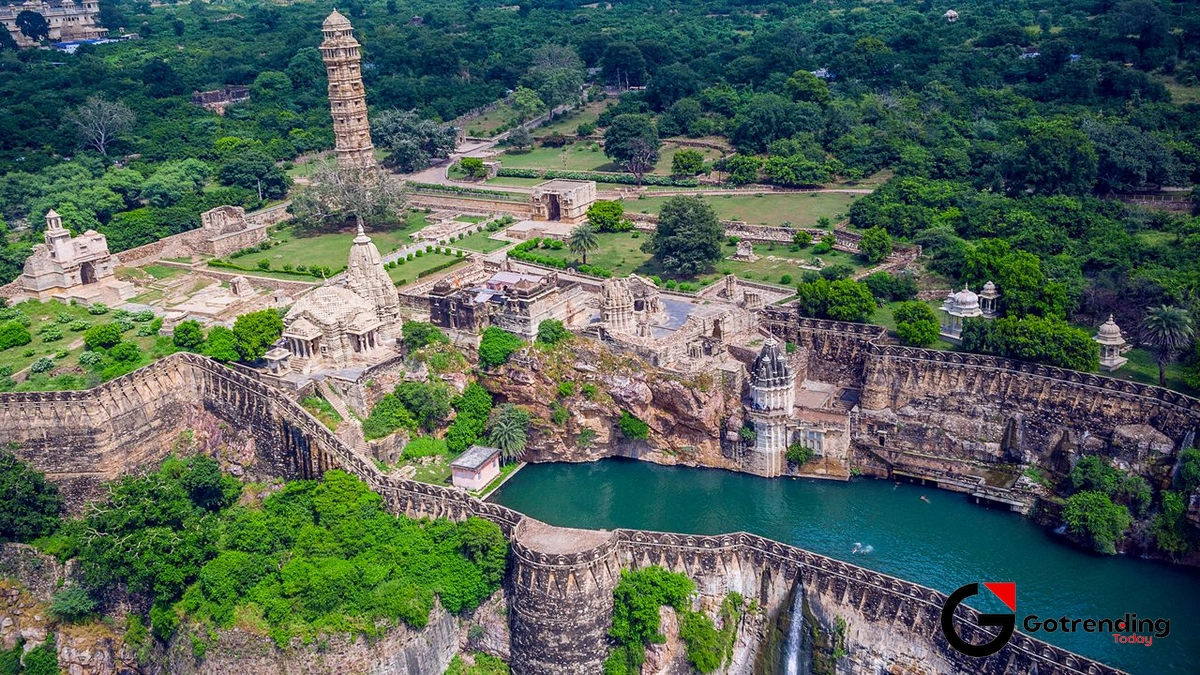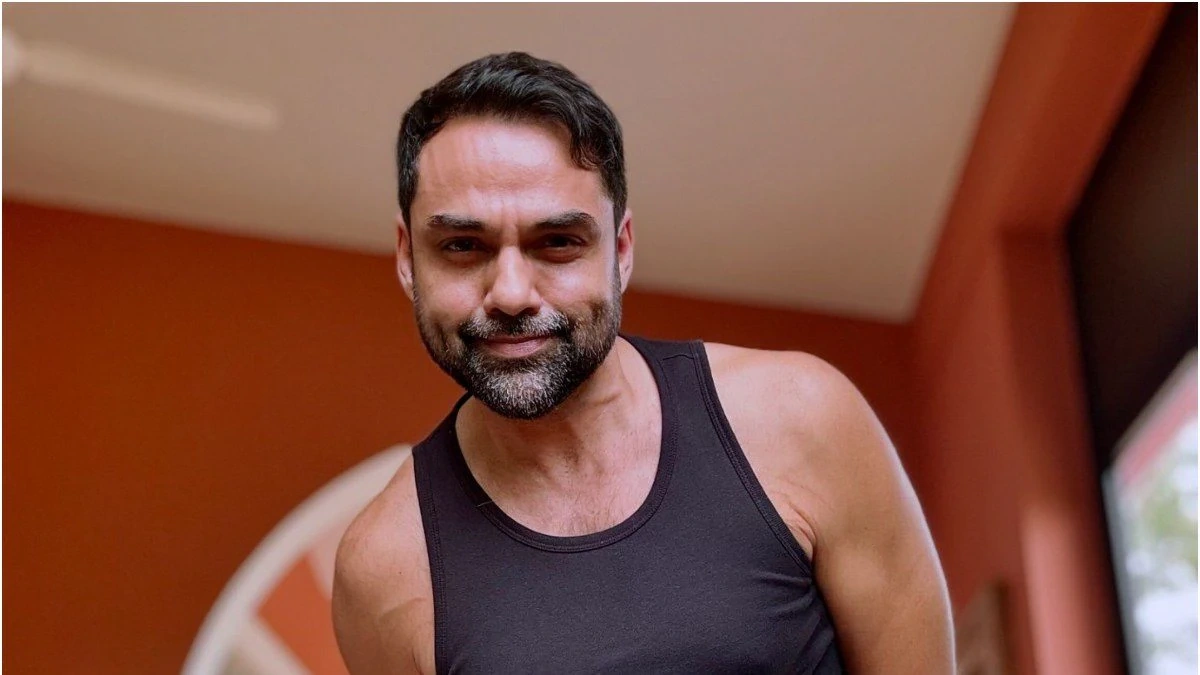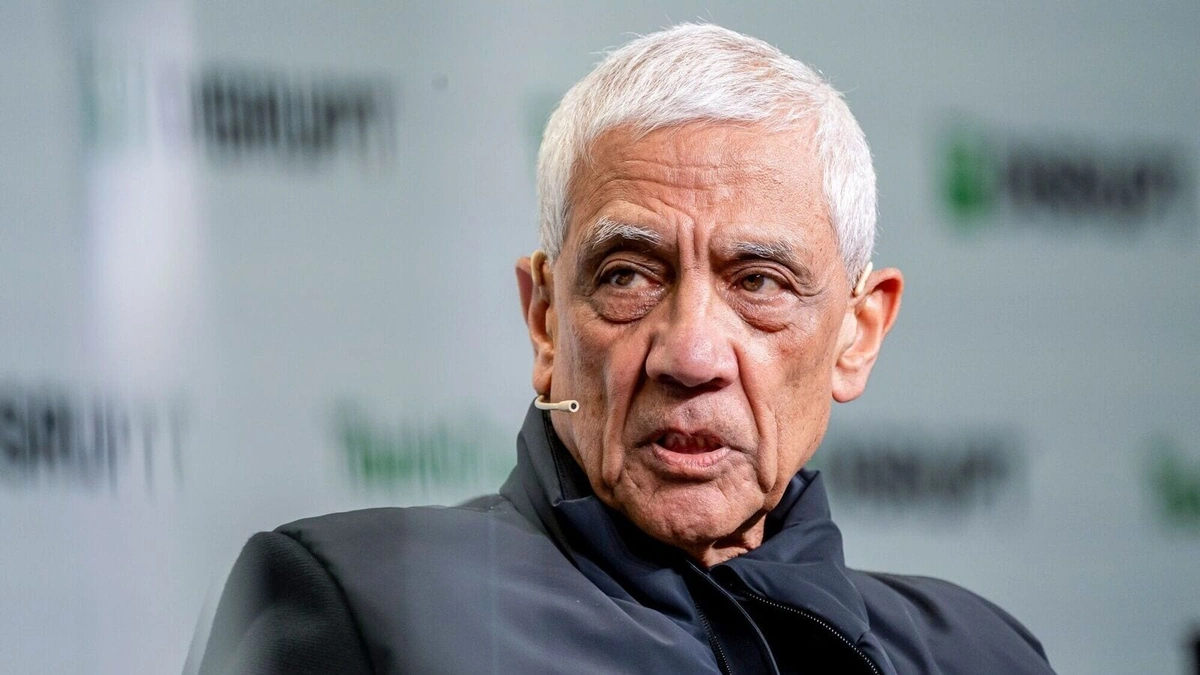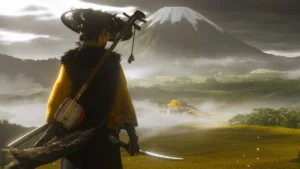Chittorgarh Isn’t a Place You Visit. It’s a Place You Feel.
There are some names that just hang heavy in the air, weighted with stories. Chittorgarh is one of them. Before you even see a picture of the sprawling fort, the name itself conjures something. A sense of defiance. A whisper of tragedy. A deep, unshakable pride. I’ve always thought of it less as a destination and more as a pilgrimage into the very soul of Rajasthani lore.
It’s not just a fort. Let’s get that out of the way. Calling it that is like calling the Himalayas a nice hill. It’s a city. An entire, fortified city sprawling across nearly 700 acres on a lonely, elevated plateau. When you’re there, standing on its ramparts, you realize it’s a world unto itself. A silent, stone kingdom that has seen more history than most countries. It’s one of the largest forts in India, a fact that sounds impressive on paper but only truly lands when you’re there, squinting into the sun, trying to see where it ends. It doesn’t seem to.
And that’s the first thing that hits you. The sheer, audacious scale of it all.
More Than Just a Fort | A City on a Hill
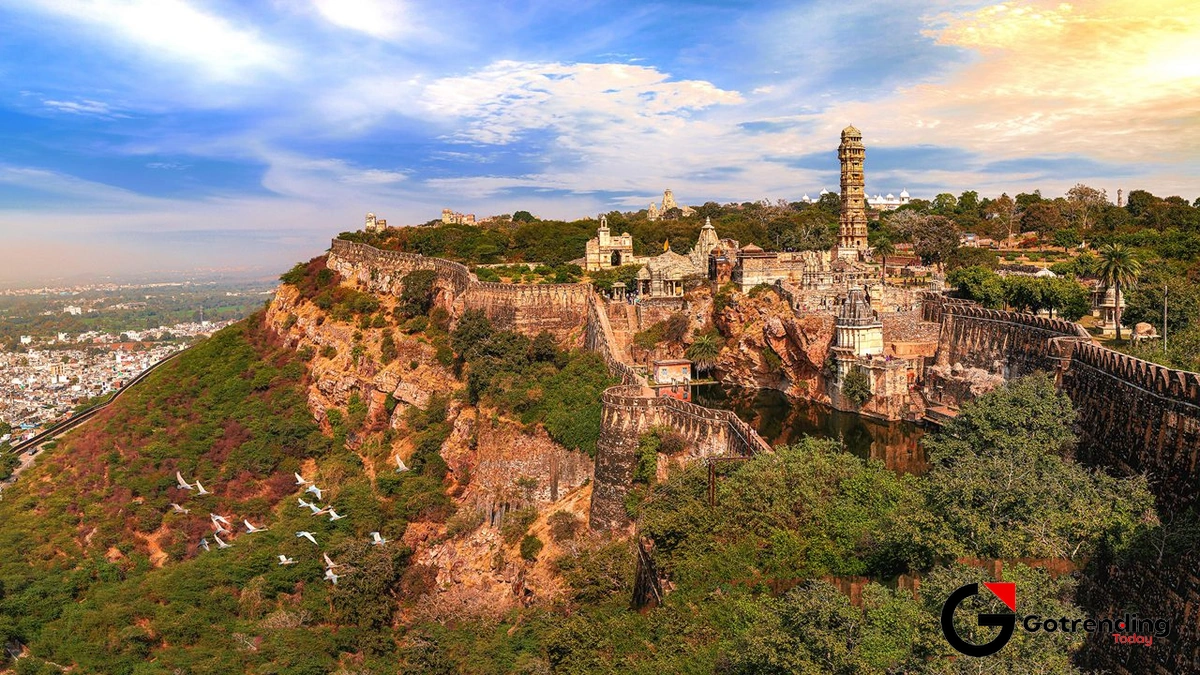
The first time I properly explored the Chittorgarh Fort , I made the rookie mistake of thinking I could “do it” in a few hours. A laughable notion. You need a vehicle just to get from one major monument to another inside its walls. There are palaces, temples, reservoirs, and memorial towers, all connected by winding roads that have felt the tread of armies, queens, and commoners for centuries.
It feels… alive. In a strange, geological way. Like a giant, sleeping beast curled up on the plains of Mewar. The reservoirs the Gaumukh Kund is my favourite, with its cow-shaped spout feeding a deep green pool acted as its lifeblood. They ensured that the city could withstand sieges that would have bled any lesser fortress dry. This self-sufficiency is a crucial part of its story. It wasn’t just a military outpost; it was a home, a capital, a sanctuary. And its status as a UNESCO World Heritage Site (as part of the Hill Forts of Rajasthan) feels less like an award and more like a simple statement of fact. Of course, it is.
But the stones don’t just tell a story of life. They scream stories of defiance.
Where Stone Screams History
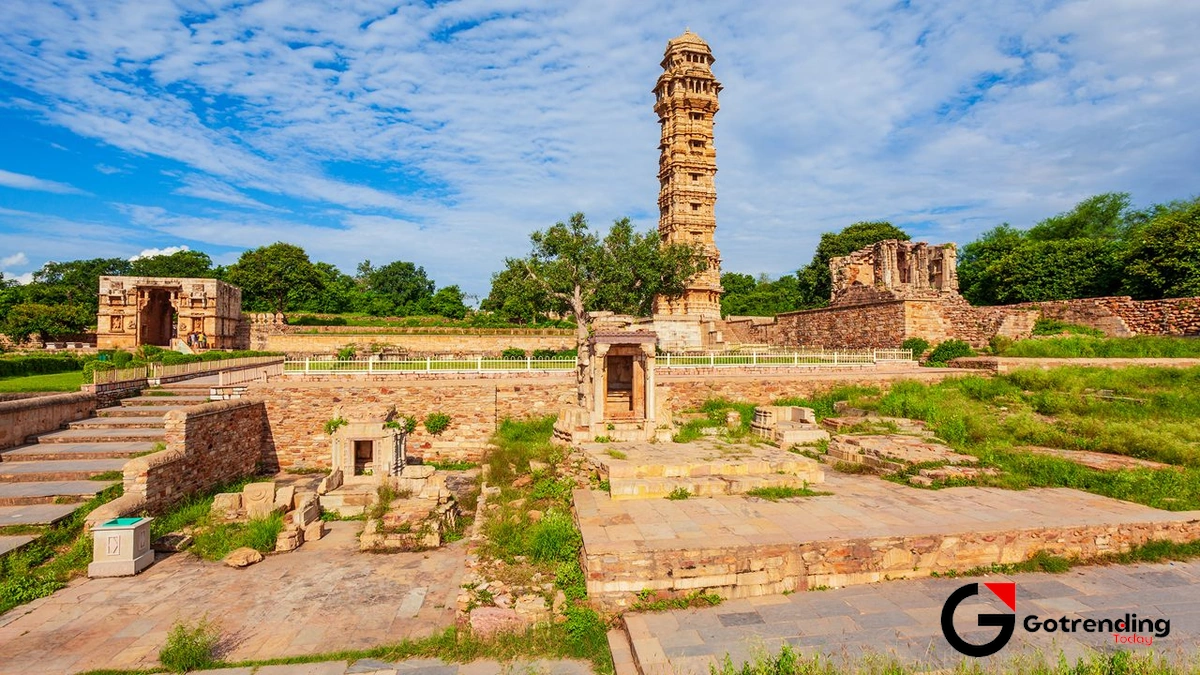
You can’t talk about Chittorgarh without talking about its bloody past. The history of Chittorgarh is written in sacrifice. It’s a history dominated by three infamous sieges, three moments when defeat was inevitable and the choice was between surrender and annihilation.
And Chittor never surrendered.
This is where the story of Jauhar comes in. It’s a word that sends a chill down your spine. When the Rajput warriors, clad in saffron, rode out for their final, hopeless battle the Saka the women of the fort, led by their queen, would commit mass self-immolation to protect their honour from the invading army. The most famous of these is tied to the legend of Rani Padmini in 1303.
Now, here’s the thing about Rani Padmini’s Palace . It’s a beautiful, haunting water palace (the Jal Mahal), and the story of Alauddin Khilji seeing her reflection in a mirror is cinematic gold. But historians will tell you the story is largely based on an epic poem, “Padmavat,” written over 200 years later. Does it matter? In a way, no. The story, true or embellished, has become part of the fort’s identity. It speaks to a code of honour so absolute it’s almost incomprehensible to the modern mind. Just as a new generation is captivated by the on-screen charisma of emerging talents like Ahaan Panday , the tales of Chittor’s queens and kings have gripped the Indian imagination for centuries. The legends are now as real as the stones they’re tied to.
Standing near the site believed to be the Jauhar Kund , even on a blazing hot day, feels cold. There’s a stillness there. A silence packed with the echoes of impossible choices.
Standing Tall Amidst the Echoes

But Chittorgarh is not just about glorious defeat. It’s also about breathtaking resilience. And nothing says that more loudly than the Vijay Stambha , the Tower of Victory.
This isn’t just a tower. It’s a nine-story, 122-foot-tall proclamation carved from sandstone. Built by Rana Kumbha to celebrate his victory over the Sultan of Malwa, it’s an architectural masterpiece. I’ve got to admit, climbing its narrow, winding stairs is a dizzying experience, but with every floor, you pass intricate carvings of Hindu deities, scenes from the epics, and inscriptions. It’s a textbook of mythology and a monument to triumph, all in one. Reaching the top and looking out over the entire fort… that’s a moment that stays with you. You see the ruins, but you also see this. This indomitable pillar of Rajput valour that has weathered centuries of sun and storm.
It’s the ultimate symbol of a kingdom that, even after being sacked, refused to be broken. It’s a testament to the idea that you can build something so beautiful, so defiant, that it outlasts the memory of your conquerors. It’s a spirit we still celebrate, that thrill of seeing a new hero rise against the odds, much like the excitement around Akash Deep’s Test debut in the world of cricket. It’s a timeless human story.
Ultimately, Chittorgarh teaches you something about time. You wander through its quiet palaces and temples, and you feel the immense weight of the past. But then you look at the Vijay Stambha, reaching for the sky, and you feel the fierce, stubborn spark of the future. It’s not a ruin; it’s a chronicle. And it’s still being written by everyone who walks its paths and listens to its silence.
Your Chittorgarh Questions, Answered
What’s the real story behind Rani Padmini?
This is a great question because it touches on the heart of Chittor’s identity. The most famous story, involving Khilji and the mirror, comes from Malik Muhammad Jayasi’s 16th-century poem “Padmavat.” While Rani Padmini was likely a real historical figure, most historians consider the dramatic events of the siege to be a blend of folklore and poetic invention. However, the story’s cultural impact is undeniable and represents the spirit of Rajput honour that defines Chittorgarh .
How much time do I actually need to explore the fort?
Honestly, give it a full day. I mean it. If you rush it in 3-4 hours, you’ll see the main highlights but you won’t feel the place. To explore the major palaces, towers, and temples without feeling like you’re in a race, and to just sit for a moment and absorb the atmosphere, you need at least 6-8 hours. Renting an auto-rickshaw or a car inside is highly recommended due to the vast distances.
Is Chittorgarh Fort just ruins, or is there more to see?
Far from it! While some areas are ruins, many of the most important structures are remarkably well-preserved. The Vijay Stambha and Kirti Stambha (Tower of Fame) are largely intact. Palaces like Rana Kumbha Palace and Padmini’s Palace give you a real sense of their former grandeur. Plus, there are several active temples within the fort walls that are still in use today. It’s a living heritage site, not a museum piece.
What’s the best time of year to visit Chittorgarh?
The best time is definitely during the cooler, drier months, from October to March. The weather is pleasant for walking around and exploring the massive grounds. The summer months (April to June) can be intensely hot, making it difficult to be outdoors for long periods. The monsoon season (July to September) can be beautiful with lush greenery, but heavy rains might disrupt your plans.
Why is Chittorgarh so important in Rajput history?
It was the capital of the kingdom of Mewar history for over 800 years and was considered the pinnacle of Rajput power and prestige. Its strategic location and formidable defenses made it a prize for any ruler. More importantly, its history of fierce resistance against powerful invaders and the legendary sacrifices made by its people turned Chittorgarh into an enduring symbol of Rajput chivalry, honour, and defiance against tyranny.
